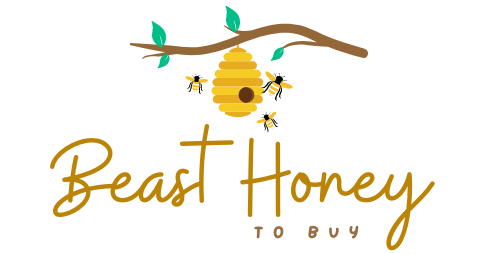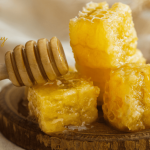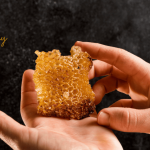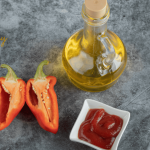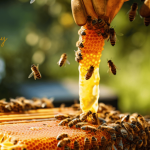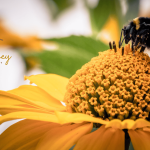Have you ever heard of blue honey? It sounds like something from a fairy tale. Imagine a jar of vibrant blue honey on your breakfast table! But does it really exist? In this blog post, we’ll dive into the world of blue honey. We’ll explore if it’s real, what makes honey unique, and other colorful varieties that might surprise you. Let’s get started!

What Is Blue Honey?
Blue honey isn’t something you see every day. In fact, it’s not a naturally occurring type of honey. Honey is usually golden, amber, or dark brown. So, where does the idea of blue honey come from?
Sometimes, bees create honey with unusual colors due to their environment or what they eat. Blue honey is one such rare phenomenon.
In some cases, blue honey is linked to specific plants or human-made substances. It’s not common, and it’s often a surprise when it happens. Let’s look at what causes this colorful twist in the world of honey.
The Science Behind Blue Honey
Honey gets its color from the nectar bees collect. Most flowers produce nectar that makes golden or amber honey. But sometimes, bees find unusual sources. For example, in 2012, beekeepers in France found their bees making blue and green honey.
Why? The bees were eating sugar syrup from a nearby factory that processed M&M candies!
The bright dyes from the candies ended up in the honey. This gave it a striking blue or green hue. It wasn’t natural, but it showed how creative bees can be. They’ll collect nectar or sugary substances from almost anything!

What Influences Honey’s Color?
- Nectar source: Different flowers create different honey colors.
- Environment: Nearby plants or human activities can affect honey.
- Additives: Sometimes, human-made substances, like food dyes, sneak in.
Is Blue Honey Safe to Eat?
If blue honey comes from artificial sources, like candy syrup, is it safe? In the case of the French M&M honey, it was still edible. The bees processed the sugar syrup just like nectar. But the beekeepers couldn’t sell it. Why? It didn’t meet food safety standards for pure honey.
Natural blue honey, if it exists, would likely be safe. But if the color comes from chemicals or dyes, you should be cautious. Always buy honey from trusted sources. If you see blue honey, ask about its origin before trying it.
Tips for Choosing Safe Honey
- Buy from reputable beekeepers or brands.
- Check labels for natural ingredients.
- Avoid honey with unnatural colors unless you know the source.
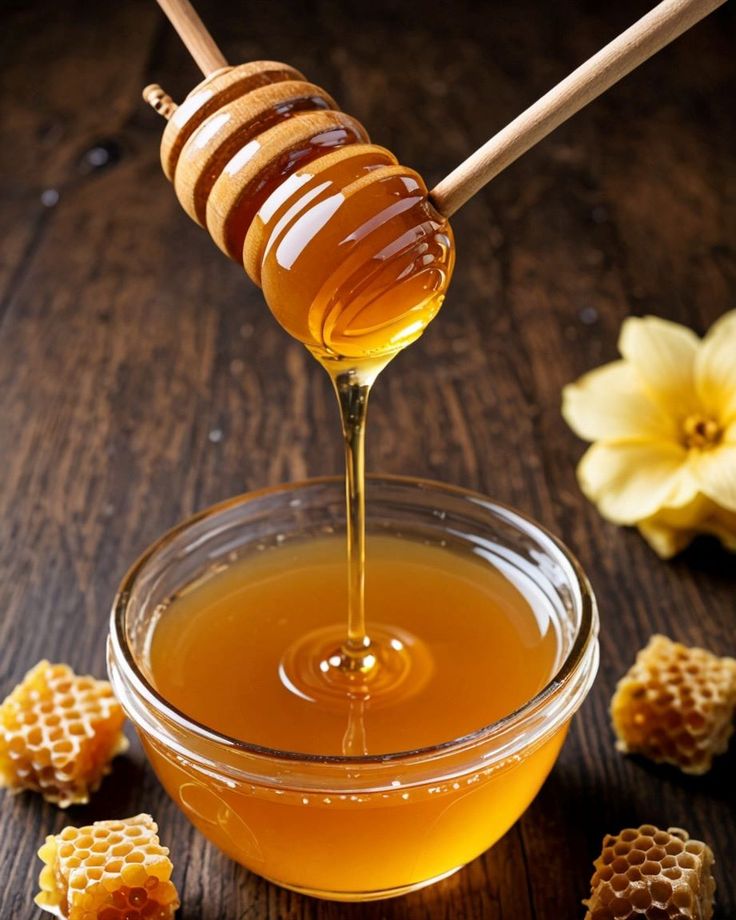
Natural Blue Honey: Does It Exist?
While the M&M honey was artificial, could blue honey happen naturally? Some plants, like borage or blue tansy, have blue flowers. Their nectar can create honey with a slight bluish tint. However, it’s not a true, vibrant blue. It’s more like a pale, bluish-gray shade.
In rare cases, minerals in the soil or water might affect nectar. This could give honey a unique hue. But bright blue honey, like in storybooks, is unlikely in nature. Most “blue honey” is either dyed or caused by unusual bee behavior, like the candy factory incident.
Other Unique Honey Varieties
Blue honey might be rare, but the world of honey is full of surprises. Let’s explore some other unique varieties that stand out for their color, taste, or origin.
Manuka Honey
Manuka honey comes from New Zealand. Bees make it from the manuka bush. It’s dark and thick with a strong, earthy flavor. People love it for its health benefits. It’s often used for sore throats or skin care. Its rich color and texture make it a standout.

Acacia Honey
Acacia honey is almost clear. It’s one of the lightest honeys you can find. It’s made from acacia flowers and has a mild, sweet taste. It’s great for people who don’t like strong flavors. Its clarity makes it look like liquid glass!
Buckwheat Honey
Buckwheat honey is dark and bold. It’s made from buckwheat flowers and has a molasses-like taste. It’s packed with antioxidants. Some say it’s great for boosting immunity. Its deep brown color is striking compared to lighter honeys.
Mad Honey
Mad honey is another unique type. It’s made in places like Nepal and Turkey. Bees collect nectar from rhododendron flowers, which contain a toxin called grayanotoxin. This gives the honey psychoactive effects. It can make you feel dizzy or even cause hallucinations. It’s rare and risky but fascinating!
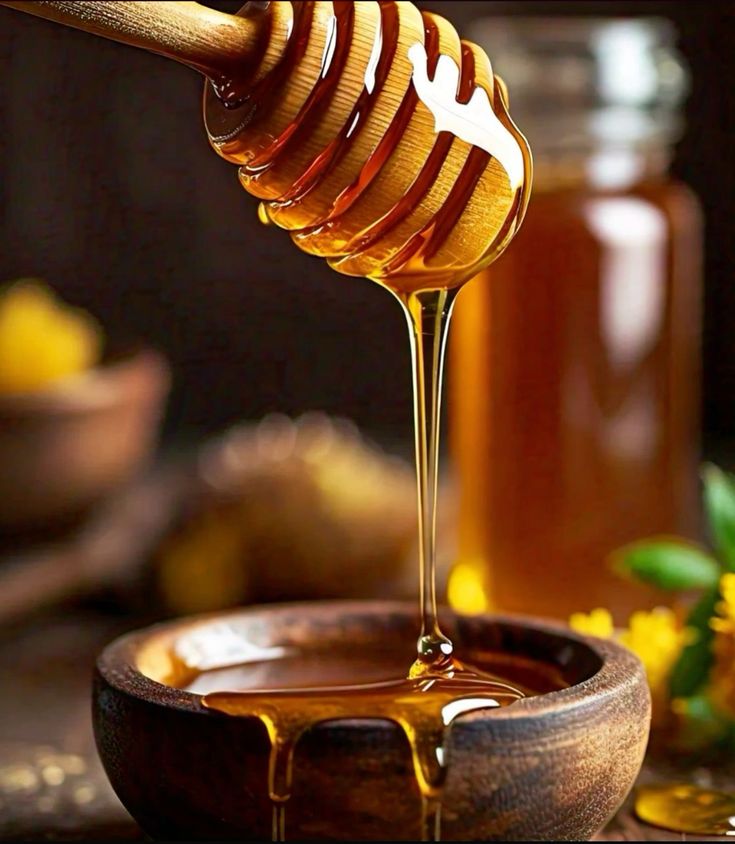
Why Do Bees Make Unusual Honey?
Bees are amazing creatures. They don’t care if their nectar comes from flowers or a candy factory. If it’s sweet, they’ll use it! This is why honey can vary so much. The flowers, climate, and even nearby industries all play a role.
For example, in urban areas, bees might find sugary drinks or food waste. This can change the honey’s color or flavor. In rural areas, wildflowers create unique blends. Every jar of honey tells a story about where the bees have been.
The Cultural Fascination with Colored Honey
Colored honey, like blue or green, captures people’s imagination. It’s not just about taste. It’s about the story behind it. In France, the blue M&M honey became a local sensation. People were amazed that bees could create something so unusual.
In some cultures, unique honeys have special meanings. In Nepal, mad honey is part of traditional medicine. In New Zealand, manuka honey is a symbol of natural healing. Colored honey, even if rare, adds to the magic of beekeeping.
Can You Make Blue Honey at Home?
You might be wondering if you can create blue honey yourself. The short answer? Sort of. You could add natural food dyes, like spirulina or butterfly pea flower, to regular honey. These create a blue tint and are safe to eat. But this isn’t true blue honey—it’s just dyed.
If you want authentic blue honey, you’d need bees to do the work. That means finding a nectar source that naturally creates a blue hue. Good luck with that—it’s super rare! For most of us, blue honey remains a fun idea rather than a reality.
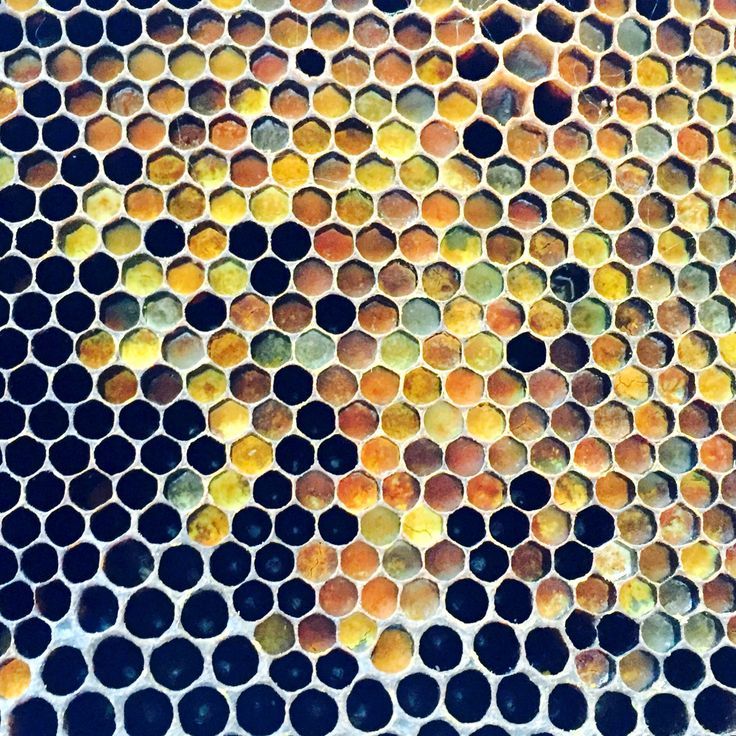
How to Make Fake Blue Honey
- Mix a small amount of natural blue food dye (like spirulina) with honey.
- Stir well until the color is even.
- Store in a clean, airtight jar.
- Note: This won’t taste different—it’s just for looks!
The Future of Blue Honey
As beekeeping grows, we might see more unusual honeys. Climate change, new plants, or even urban environments could lead to colorful surprises. Scientists are also studying how bees interact with their surroundings. This could uncover new ways honey gets its unique traits.
For now, blue honey is more of a curiosity than a common product. But it shows how creative nature can be. Who knows? Maybe one day, true blue honey will be a reality!
Why Honey Lovers Should Care
Honey isn’t just a sweetener. It’s a window into the world of bees. Every jar reflects the flowers, landscapes, and even accidents (like M&Ms!) that bees encounter. Exploring unique varieties, like blue honey, makes you appreciate nature’s diversity.
If you’re a honey lover, try seeking out different types. Taste acacia for its lightness or buckwheat for its boldness. If you’re feeling adventurous, look into mad honey (but be careful!). Each variety has a story to tell.
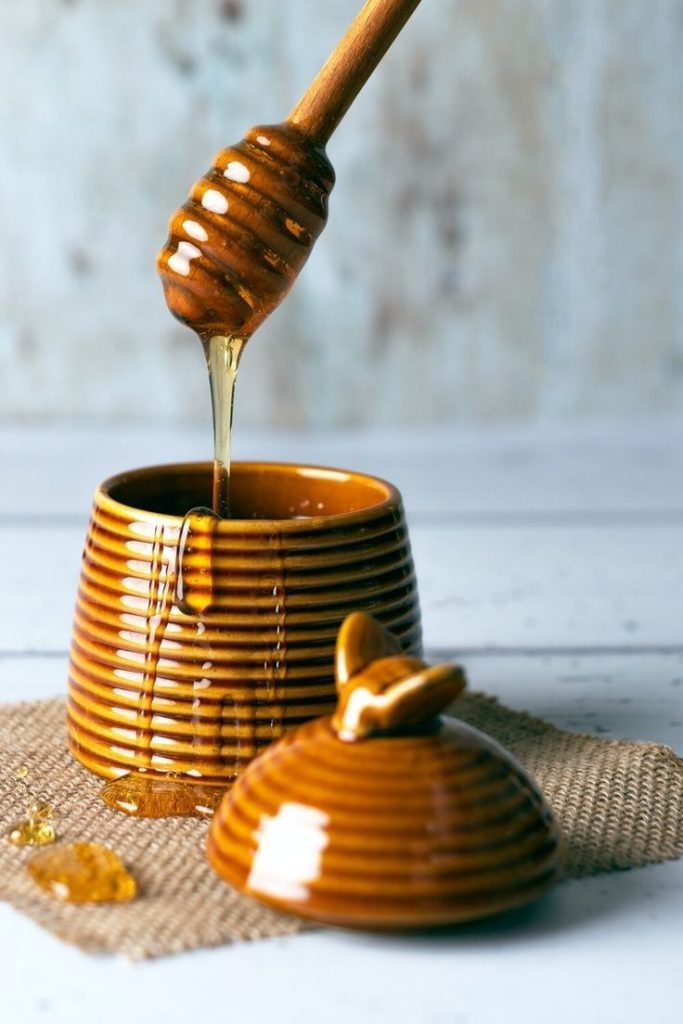
Final Thoughts on Blue Honey
Blue honey might not be common, but it’s a reminder of how surprising nature can be. From candy-colored hives in France to the wild rhododendrons of Nepal, honey comes in all sorts of forms. Whether it’s blue, green, or golden, every jar is a little miracle made by bees.
Have you ever tried a unique honey? Maybe you’ve heard of another colorful variety? Share your thoughts in the comments! And if you’re on the hunt for blue honey, keep your eyes peeled—it’s out there, somewhere!
